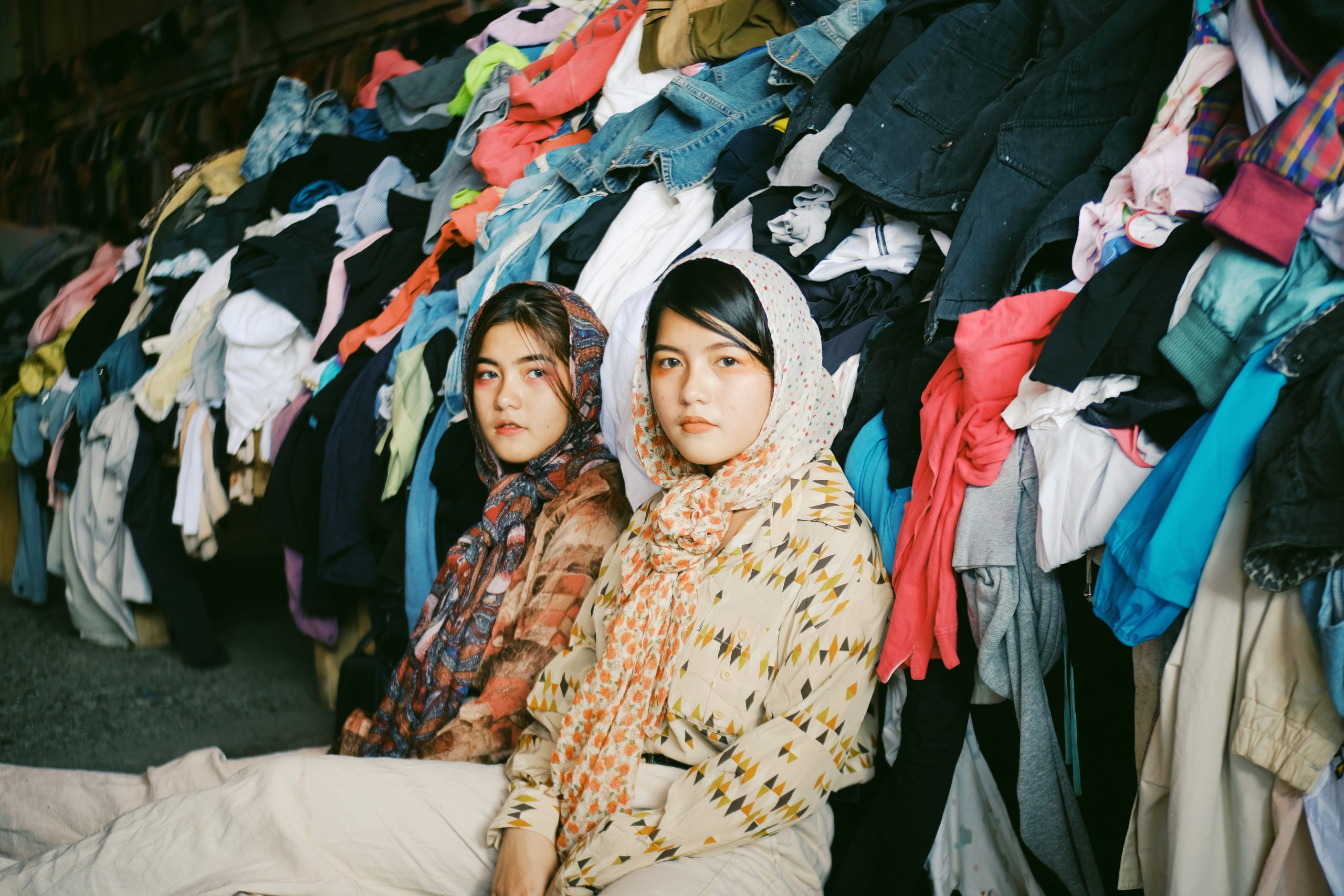
Fashion designers used to present seasonal collections to introduce new merchandise. But over time, the desire for newness caused the frequency of introductions to compress down dramatically. New drops started to occur monthly, then weekly, then in some cases even daily. Prices got cheaper. Fads became fleeting. Clothing became disposable. Enter the world of fast fashion.
For many, buying new clothes and switching up styles is an obsession. But at what price?
It is reported that the fashion industry puts out 150 billion clothing items a year. According to The Business of Fashion’s Sustainability Index 2021 Report, most clothes in the world are made using fossil fuels. Oil-based polyester is the most used fabric in the world with nearly 60 million tons produced in 2019. Fashion’s second-favorite fiber is cotton, a product with a complicated environmental footprint with past and current links to modern slavery.
Research administered by McKinsey and Company found that the fast fashion industry is responsible for around 8% of the world’s total greenhouse gases. According to the United Nations, the fashion industry is also one of the largest contributors to the micro-plastic pollution that is impacting our oceans and marine life.1 60% of all garments end up in landfills or incinerators within the year that they are bought, which proves how often consumers are utilizing the low prices and on-trend looks of fast fashion.2
The negatives of the fast fashion industry are vast, and they cover more than just pollution. The factory workers who create the clothing work in subpar conditions. Even with the threat of contracting COVID-19, the garment workers are continuously working in crowded factories that lack protective necessities.
Gender rights are also an issue, with 80% of the 40-60 million fast fashion employees being women.3 The owners of these companies are usually males who believe that women are more likely to work longer hours for smaller amounts of pay.
Thankfully, there are organizations and nonprofits that are raising awareness for the negative effects of the fast fashion industry. Sustainability has become more than a fleeting headline; instead, millions of people are now beginning to take social and environmental issues seriously.
Here are some organizations that are making an effort to analyze, report, and spread conscientiousness about the fashion industry’s environmental and social impact:
Originating in San Francisco, the SAC envisions an apparel, footwear, and textile industry that produces no environmental harm and has a positive impact on people and the communities around them. The SAC was born out of a partnership between Walmart and Patagonia in 2009 where the two companies sought to create an index that would measure the environmental impact of their products. As a result, they devised the Higg Brand and Retail Module (Higg BMR).
The Higg BMR allows companies to monitor their sustainability journey by identifying opportunities for advancement along their global value chain. From the beginning of the creation of a material to the end of its use, the Higg BMR identifies the entire life cycle of a product, while determining the sustainability risks and impacts. For example, the Higg BMR analyzes the management system, supply chain, packaging, use and end of use, retail stores, offices, transportation, and distribution centers.
Today, consumers are becoming increasingly more curious about the origin of their clothes. Businesses using the Higg BMR can now be more transparent about the life cycle of their garments, which helps support how they value their customers’ opinions. The assessment that the Higg BMR administers also helps brands connect by promoting social responsibility strategies and practices that advocate for the well-being of workers and the planet.
Additionally, the Higg BMR evaluates 11 environmental impacts:
More than 250 global organizations are part of SAC. You can download its brochure and become a member by filling out a simple survey on its website.
Since 1989, the CCC has dedicated its time to ensuring that workers in the garment industry have safe working conditions and that their fundamental rights are respected. They seek to educate consumers, businesses, and even governments.
The CCC is a global network that brings together nearly 230 trade unions and NGOs that cover a multitude of perspectives and interests, including women’s rights, poverty reduction, and consumer advocacy. It also coexists with many similar labor rights campaigns.
Several regional coalitions have become aware of pressing issues within their territories and are actively seeking support from the CCC. Currently, these regions are The European Coalition, The South Asian Coalition, The South East Asian Coalition, The East African Coalition, and other groups and organizations in North America, Central America, and Australia.
You can show your support of the CCC’s mission by visiting its website, where it invites guests to take action by posting on social media to spread awareness.
Aside from supporting well-vetted impact organizations, it is important to reevaluate your clothes shopping patterns and usage behaviors. Here are a few tips that can help you move toward a more sustainable closet:
Humanist Beauty is committed to the highest standards of social and environmental impact. Learn about founder Jennifer Norman’s From My Closet campaign which gifted the community over $20,000 worth of merchandise from her closet to help raise funds for charity. Check out more about Humanist Beauty’s mission and commitments here.
—
References:
https://www.thewellessentials.com/blog/what-is-fast-fashion-how-your-clothes-are-hurting-the-planet#:~:text=When%20Did%20Fast%20Fashion%20Start%3F%20Fast%20fashion%20can,from%20design%20to%20stores%20within%20two%20weeks%20time. [1] [2]

Disclaimer: Statements on this website have not been evaluated by the FDA. These products are not intended to diagnose, mitigate, treat, cure, or prevent any disease, nor are the products intended to affect the structure or any function of the body of man/woman or other animals. CANNABIDIOL USE WHILE PREGNANT OR BREASTFEEDING MAY BE HARMFUL. KEEP OUT OF REACH OF CHILDREN. Humanist Beauty Herban Wisdom products include hemp extract that contain less than 0.3% THC. Products containing CBD or THC are not to be used by or sold to persons under the age of 21.
We don’t retouch the skin of the model humans shown on this website. Keepin’ it real.